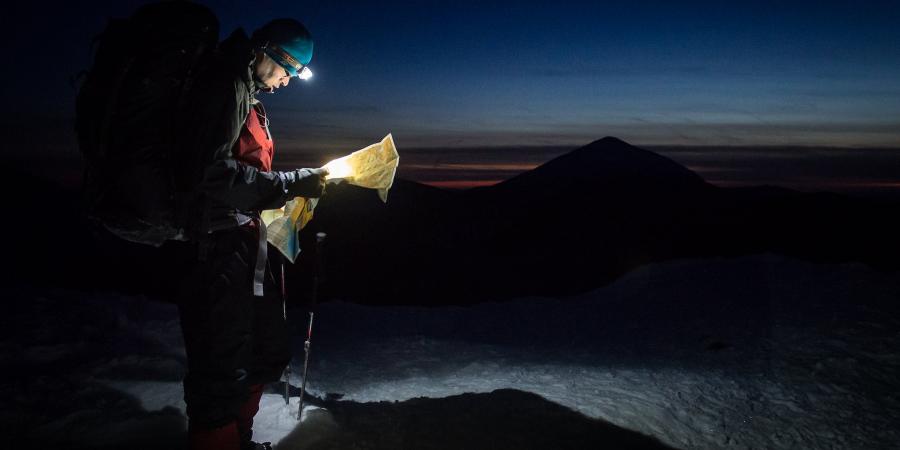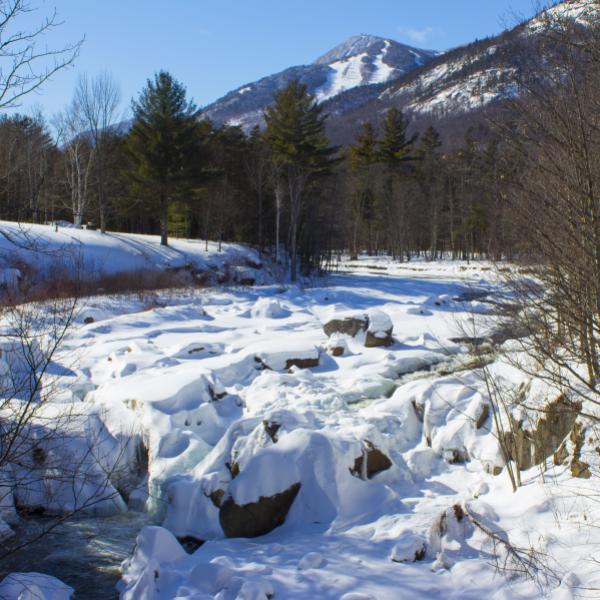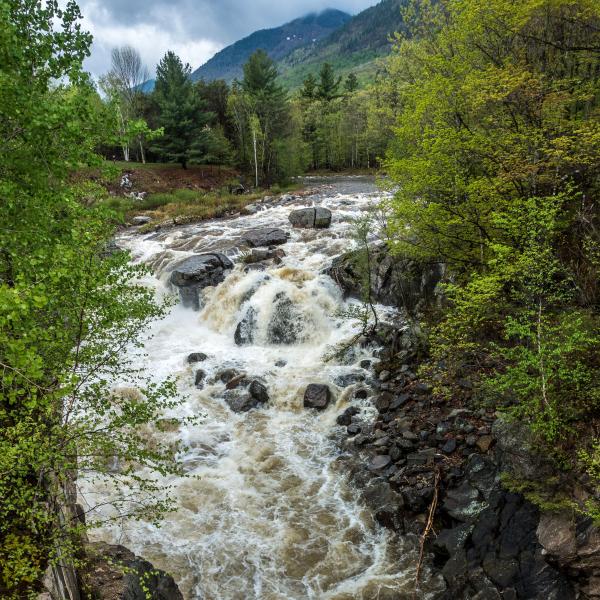In case you didn't know, this blog is about always carrying a headlamp with you on your day trips. But maybe you already figured that out from the title. Why write about this topic? Well, consider these quotes extracted from DEC Ranger Reports regarding calls and accidents they responded to in the last year: "At 11:05 p.m., the group arrived back at Marcy Dam as [the forest ranger] started in to escort the hikers out of the woods since they did not have any flashlights with them;" "The hiker did not have a headlamp or flashlight and reported that his four friends hiked out ahead of him;" "The caller stated that the pair did not have flashlights or headlamps and that his girlfriend had rolled both of her ankles but was able to walk." These are only a few of the multitude of examples available.

Headlamps are practical for planned, and unplanned, adventures. Photo: mystero233
The Seven Principles of Leave No Trace are familiar to many, but perhaps not to the people who most need them. The idea of these principels is to provide a set of guidelines that, when followed, minimize impact to the natural world and maximize enjoyment of the outdoor recreationist. It's easy to find more information about these seven principles online, but the specifics of each principle may not be as intuitive. The focus of this blog falls under the first principle: plan ahead and prepare. The concept seems simple: make sure you're ready for your next hike or outdoor adventure. But what that actually means can get lost in the fray.

Camping anyone? Photo: Spencer Black
Let's focus on hiking, the most popular Adirondack outdoor activity, as our case study. In broad strokes, planning ahead and preparing for your hike means you check the weather, examine the route you plan to follow – including distance and elevation, leave an itinerary with a trusted friend or relative, and decide what to bring with you. Many hikers focus on what they'll need for their planned itinerary. But what about surprises? Unexpected weather, misreading a map or trail sign, or an injury of some sort can significantly alter the course of your trip. Therefore, it's important to pack a little extra for those possibilities: a rain jacket, warm clothing layers in case the weather changes, you're out longer than expected, or you're forced to take a long break, extra food and water, and of course – a headlamp.

Visit one of our business partners, like ADK Lakes & Trails, High Peaks Cyclery, or The Mountaineer, for good headlamp selections. Photo: Jeff Miller
Support our work to promote responsible, low-impact recreational opportunities protective of Ausable waterways and adjacent lands. Give with confidence today!
I recommend bringing a headlamp on every single day trip, which may seem excessive for short trips. But what if you injure your ankle and need to wait for help into the night? You may want a headlamp. What if you decide to spend an hour or two longer on that mountain summit to watch a stunning sunset? You'll need a headlamp. What if you run into a lost and exhausted hiker over an hour from the trailhead just before sunset? I bet a headlamp will be pretty helpful. Do you see the trend? Of course, a flashlight will do in many of these cases. But headlamps are more convenient, safer, and cost and weigh just as much as a good quality flashlight. When you need it, that source of illumination will be worth its weight in pure NY maple syrup.

It doesn't get much more beautiful than a clear, Adirondack night sky over a glassy pond. Photo: Brian Price
I'll close with one more anecdote. My frequent outdoor adventure friends make fun of me on a regular basis for being "too" prepared. I likely deserve their teasing, because I personally carry two headlamps, plus extra batteries, on all of my trips. Why? Well, ask my winter 46er buddy whose headlamp died on our nighttime snowshoe hike out of Blake Peak in the heart of winter. Or my good friend who didn't have to hike side-by-side out of our un-planned, and delightfully refreshing, sunset swim at a surprise beach two miles into the Pigeon Lake Wilderness. I've made these mistakes myself plenty of times in my early outdoor adventure days, and of course, it's possible to go overboard with planning and packing as a response. But why not be ready for one more "what if" and toss that headlamp in your daypack? When the night comes that you need it, I think you'll thank your past self for the decision.
Story by Tyler Merriam, Donor Outreach Manager. Top photo by Joshua.
Sign-up for our e-newsletter to get weekly updates on the latest stories from the Ausable River Association.





